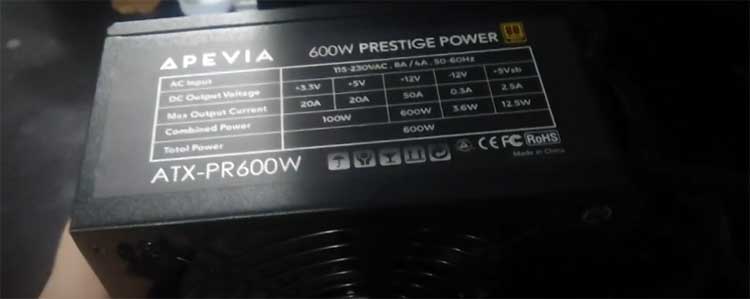If you’re stuck choosing between the TP-Link AX3000 and the TP-Link AX5400, this article is for you.
I’ve personally tested both routers and will walk you through everything you need to know—from real-world speed and range to features that actually matter for your home or small office.
My goal here is to help you make the most informed choice between the AX3000 and AX5400, so you don’t waste your money or end up frustrated with your Wi-Fi setup.
Quick Comparison Table: TP-Link AX3000 Vs. AX5400
| Feature | TP-Link AX3000 | TP-Link AX5400 |
| Wi-Fi Standard | Wi-Fi 6 (802.11ax) | Wi-Fi 6 (802.11ax) |
| Max Speed (Theoretical) | Up to 3 Gbps | Up to 5.4 Gbps |
| Bands | Dual-Band (2.4GHz + 5GHz) | Dual-Band (2.4GHz + 5GHz) |
| Antennas | 4 external antennas | 6 external antennas |
| Ethernet Ports | 4 Gigabit LAN, 1 WAN | 4 Gigabit LAN, 1 WAN |
| OFDMA & MU-MIMO | Yes | Yes |
| USB Port | No | Yes (1 USB 3.0) |
| Best For | Small households, basic streaming | Large homes, gaming, 4K streaming |
| Price Range | More budget-friendly | Higher price, more features |
My Hands-On Experience with Both Routers
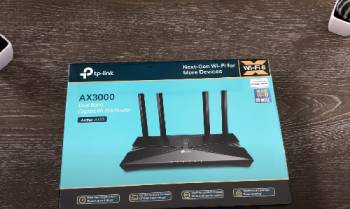
When I first got the AX3000, I was upgrading from a basic Wi-Fi 5 router. I noticed a significant jump in performance right away.
Setup through the TP-Link Tether app was quick and painless.
I could stream Netflix in 4K in the living room while my partner had a video call in the office—no lag, no complaints.
For a household with a few devices and moderate usage, it did the job flawlessly.
But things changed when we added smart bulbs, a Ring doorbell, and another laptop to the mix. The AX3000 started to show its limitations.
Downloads felt a bit slower when someone else was streaming, and our Zoom calls occasionally froze up. That’s when I decided to try the AX5400.
The difference was noticeable from day one. With its six antennas and higher bandwidth, the AX5400 blanketed my two-story home with solid coverage.
No more Wi-Fi dead zones in the basement or the backyard. Gaming performance on the PS5 also improved, with lower latency and faster download speeds.
Even when we had ten devices connected—smart TV, laptops, smart plugs, phones, and a printer—everything ran smoothly.
The USB 3.0 port also came in handy for connecting an external hard drive, letting me share files across devices without plugging anything into my laptop.
I won’t lie—the AX5400 is overkill if you only have a few devices and basic needs.
But if you’re juggling remote work, 4K streaming, or gaming under one roof, it’s totally worth the higher price tag.
For my setup, the AX5400 gave me the kind of network reliability that makes me forget the router even exists—which is exactly what you want from your home Wi-Fi.
Installation and Setup: Simple Enough for Anyone?
Both routers are designed with user-friendliness in mind, but there are some key differences in how you get up and running.
With the AX3000, installation was smooth and fast. The TP-Link Tether app walks you through every step, from plugging in cables to setting up your Wi-Fi name and password.
It took me under 10 minutes to get online. The app auto-detects your router, which saves time if you’re not tech-savvy.
The AX5400 follows the same setup process, but with a few extra configuration options that might appeal to power users.
You can set bandwidth priorities, customize parental controls, and link it to Alexa for voice control.
It’s still easy, but takes a couple of extra steps if you want to fine-tune everything.
If you’re like me and enjoy tweaking network settings, you’ll appreciate the added control.
Overall, both routers are beginner-friendly, but the AX5400 gives you a bit more to play with.
Streaming and Gaming Performance
Let’s talk about performance where it matters most—your entertainment.
On the AX3000, streaming HD content on Netflix, YouTube, and Disney+ was perfectly fine. Buffering was minimal, and video quality remained consistent.
But once more than three people started using high-bandwidth apps at the same time, the stream would occasionally stutter or drop resolution.
The AX5400, on the other hand, handled simultaneous streams on multiple 4K devices like a champ.
I even tested it during a live Twitch stream and a large game update on my PC. Zero drops. Zero lag.
You feel the difference when multiple people are online doing different things—whether it’s gaming, streaming, or uploading to the cloud.
Gamers especially will notice how the AX5400 cuts latency during intense online play.
Ping times were lower and more stable, even when other devices were active on the network.
Smart Home Compatibility
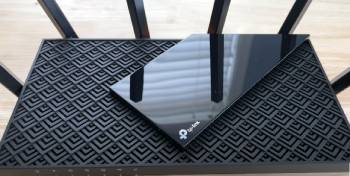
As someone who’s steadily building a smart home, I was curious to see how each router handled a growing list of connected devices.
The AX3000 handled basic smart home setups like smart lights, speakers, and a thermostat pretty well.
But when I added cameras and smart plugs in multiple rooms, I noticed delays. Occasionally, the TP-Link Kasa cameras took a few extra seconds to load.
The AX5400, with its better bandwidth allocation and signal strength, made those devices respond instantly.
Whether I was checking a live camera feed or turning lights on remotely, everything felt snappy.
You could easily run 20+ smart devices on this router without any real impact on performance.
If you’re going all-in on smart home tech, the AX5400 is the clear winner for stability and responsiveness.
Future-Proofing: Is It Worth Spending More?
Wi-Fi 6 is the current gold standard, but not all Wi-Fi 6 routers are created equal.
The AX3000 is great if you just upgraded to fiber internet or cable and want a boost without spending much.
But it may struggle to keep up in a few years as your household’s internet usage grows.
The AX5400 gives you more than just faster speeds—it gives you longevity.
With more powerful hardware, support for dozens of devices, and added features like USB ports and stronger antennas, it’s ready for the future.
I saw it as a one-time investment that would hold up even as we added more devices and demanded more from our network.
So yes, it costs more—but if you want a router that won’t need replacing for 4–5 years, the AX5400 is the better long-term choice.
Pros and Cons TP-Link AX3000
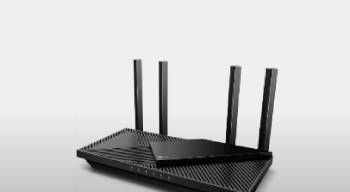
Pros:
- Affordable for a Wi-Fi 6 router.
- Good performance for small to medium homes.
- Easy setup via the Tether app.
- MU-MIMO and OFDMA supported for simultaneous connections.
- Great for HD streaming and basic work-from-home setups.
Cons:
- Limited coverage for large homes.
- No USB ports for external device sharing.
- Slows down under multiple high-demand connections.
- Lacks some advanced QoS controls.
Pros and Cons TP-Link AX5400
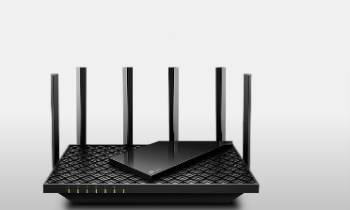
Pros:
- Excellent coverage and signal strength.
- Perfect for 4K streaming, gaming, and heavy multitasking.
- Six antennas improve signal reach and stability.
- USB 3.0 port for media and file sharing.
- Faster throughput with minimal latency under load.
Cons:
- Higher price point.
- Slightly bulkier than AX3000.
- Advanced features may go unused by basic users.
- Setup might feel slightly more complex for non-tech users.
Performance & Range: The Real-World Difference
The AX3000 performed well in my 1,200 square foot apartment.
Signal strength stayed consistent in rooms 20–25 feet away.
Anything beyond that, like the laundry room or far end of the balcony, saw a slight drop in speed.
The AX5400? It covered my entire 2,000 square foot house, garage included.
Download speeds held up even in the farthest corners. That’s thanks to those extra antennas and better beamforming capabilities.
For those living in multi-floor homes, the AX5400 makes a real difference. Dead spots became a thing of the past.
Also Read: My Thoughts On Beelink Vs. Minisforum Mini PC
Device Handling and Bandwidth Efficiency

Both routers use OFDMA and MU-MIMO, which means they’re good at handling multiple devices at once.
But the AX5400 pulls ahead when the network is under pressure.
Streaming in one room while downloading massive files in another didn’t impact latency or speeds.
It distributes bandwidth more efficiently—something that’s noticeable if you have kids gaming while you’re working on a video call.
The AX3000 does well up to 5-6 devices running demanding tasks.
Beyond that, it starts prioritizing some over others, which can lead to buffering or slower speeds.
Features That Matter
Let’s talk features—those small things that make life easier.
The AX5400 comes with a USB 3.0 port, which I used to set up a shared drive for media streaming.
It also includes more advanced Quality of Service (QoS) settings that let me prioritize gaming traffic or video calls, depending on what I needed most.
Both routers support TP-Link HomeShield, which adds parental controls, network security, and performance optimization.
But the AX5400 unlocks more features in the premium tier of HomeShield.
If you’re a parent or concerned about security, those added tools are genuinely helpful.
Who Should Buy the TP-Link AX3000?
You should go for the AX3000 if:
- You live in a small to medium home or apartment.
- Your primary use is web browsing, HD streaming, and video calls.
- You don’t have more than 6-8 connected devices.
- You’re budget-conscious and don’t need top-tier features.
In these scenarios, the AX3000 provides plenty of speed and solid reliability. It’s an excellent entry point into the Wi-Fi 6 world.
Who Should Buy the TP-Link AX5400?
The AX5400 is ideal if:
- You have a large home or multiple floors.
- You stream in 4K, game online, or work with large cloud files.
- Your household has more than 10 devices online regularly.
- You want USB device support and better QoS settings.
Basically, if you’re building a smart home or already have one, the AX5400 will keep up better than the AX3000. The extra cost pays off in performance.
Also Read: My Thoughts On Consumer Cellular Home Phone Base
Frequently Asked Questions (FAQs)
Yes, it’s a great mid-range Wi-Fi 6 router that offers solid performance for basic to moderate users.
It was first released around late 2020, so it’s relatively modern and still supported.
The AX3000 is better due to its higher speed, more powerful hardware, and better performance under multiple device loads.
TP-Link has been under scrutiny in the past over privacy concerns and firmware vulnerabilities, but updates have addressed many of those issues.
Final Thoughts
So, which router should you buy?
If you’re running a basic setup with a few devices, the TP-Link AX3000 offers a reliable, budget-friendly entry point into Wi-Fi 6.
You’ll get faster speeds, better device handling, and a more consistent experience compared to older models.
But if you want a future-proof network that can handle anything you throw at it—gaming, 4K streaming, smart home devices—the TP-Link AX5400 is absolutely worth the extra investment.
I’ve used both, and while the AX3000 worked well for light tasks, the AX5400 gave me stress-free Wi-Fi under all conditions.
You have to decide what kind of internet user you are. If your home is a digital battleground, pick the router that’s built to win.
